
Praehistorische Zeitschrift
Scope & Guideline
Pioneering Prehistoric Scholarship for the Curious Mind
Introduction
Aims and Scopes
- Material Culture Studies:
The journal emphasizes the analysis of artifacts, including pottery, tools, and other cultural materials, to understand the daily lives, economies, and social structures of prehistoric communities. - Settlement Archaeology:
Research exploring settlement patterns, spatial organization, and the socio-economic dynamics of prehistoric societies is a core focus, highlighting how environments influenced human habitation. - Technological and Craft Production Analysis:
Papers frequently address the technological aspects of prehistoric craft production, examining methods and materials used by ancient peoples in their daily lives and rituals. - Interdisciplinary Methodologies:
The journal promotes the use of diverse methodologies, including archaeological science, ethnoarchaeology, and experimental archaeology, to enrich the understanding of prehistoric contexts. - Cultural and Social Dynamics:
Research investigating the cultural interactions, migrations, and social hierarchies within prehistoric populations is central to the journal, providing insights into the complexity of ancient societies.
Trending and Emerging
- Bioarchaeology and Human Osteology:
An increasing number of papers focus on bioarchaeological methods, analyzing skeletal remains to provide insights into health, diet, and social structures of prehistoric populations. - Environmental Archaeology:
There is a growing emphasis on understanding human-environment interactions, including climate change and resource management, highlighting the importance of ecological contexts in prehistoric studies. - Social Identity and Cultural Interaction:
Research exploring themes of identity, migration, and cultural exchange among prehistoric populations is on the rise, reflecting a broader interest in understanding the dynamics of ancient societies. - Experimental Archaeology:
The application of experimental archaeology as a method for testing hypotheses about ancient technologies and practices is gaining momentum, allowing researchers to recreate and analyze prehistoric techniques. - Digital Archaeology and Data Analysis:
The incorporation of digital tools and data analysis techniques in archaeological research is increasingly prevalent, facilitating new ways to visualize and interpret archaeological data.
Declining or Waning
- Traditional Chronological Studies:
There has been a noticeable decline in the publication of papers focused solely on chronology without integrating broader archaeological contexts or interdisciplinary approaches, suggesting a shift towards more holistic studies. - Narrow Regional Focus:
Research that exclusively concentrates on isolated or less significant regions has decreased, indicating a trend towards comparative studies that encompass broader geographical contexts. - Artifact Typologies:
The emphasis on detailed typological studies of artifacts has waned, as scholars increasingly prioritize functional, technological, and contextual analyses over strict classification. - Historical Archaeology:
Research that primarily focuses on historical archaeology, as opposed to prehistoric contexts, has diminished, reflecting a growing preference for studies that bridge prehistoric and historical narratives. - Single-site Studies:
The trend of publishing studies centered on single archaeological sites has declined, with a shift towards more integrative approaches that consider multiple sites or broader cultural landscapes.
Similar Journals

Complutum
Where History Meets Archeological InsightComplutum, published by the Universidad Complutense de Madrid, serves as a leading academic journal in the fields of Archeology and History. With a notable track record since its inception and a convergence stretching from 2011 to 2024, the journal has established itself as a pivotal platform for scholarly discourse in these disciplines. Recognized in 2023 with a Q2 ranking in Archeology and Arts and Humanities, as well as a Q1 ranking in History, Complutum demonstrates its commitment to quality research, attracting contributions from leading experts and emerging scholars alike. The journal's impact is further evidenced by its competitive ranks within various Scopus categories, particularly its placement in the 77th percentile for History and 64th for Archeology. As a printed publication without open access options, Complutum caters to a specialized audience, providing a forum for in-depth analysis and discussion on archaeological findings and historical interpretations. Researchers, professionals, and students engaged in these fields will find Complutum an invaluable resource for advancing knowledge and fostering academic collaboration.
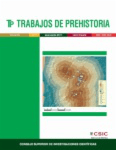
Trabajos de Prehistoria
Pioneering Research That Shapes Our Understanding of Ancient CivilizationsTrabajos de Prehistoria is a distinguished peer-reviewed journal published by the Consejo Superior de Investigaciones Científicas (CSIC) since 1988, and it has established itself as a vital resource in the field of archaeology and prehistory. With an impressive impact factor and an open access policy, the journal aims to disseminate high-quality research that contributes to the understanding of human history and prehistorical studies. This Spanish journal has consistently ranked in the top quartile (Q1) in both the Arts and Humanities and Social Sciences categories, reflecting its significance in advancing archaeological scholarship, with Scopus rankings placing it in the 85th percentile among its peers. Covering a broad scope of topics related to archaeology, it serves as a platform for innovative research that connects researchers, professionals, and students globally, enhancing academic dialogue and fostering interdisciplinary collaboration. Based in Madrid, European researchers and global academics alike benefit from its open access model, promoting wider distribution and accessibility of foundational studies in the field.
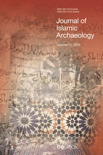
Journal of Islamic Archaeology
Unearthing the Secrets of Islamic SocietiesJournal of Islamic Archaeology is a distinguished publication dedicated to advancing the field of archaeology through the lens of Islamic heritage and culture. Published by EQUINOX PUBLISHING LTD, this journal provides a platform for researchers, professionals, and students to disseminate their findings and engage in critical dialogue regarding the archaeological aspects of Islamic societies from 2014 to the present. With an ISSN of 2051-9710 and E-ISSN 2051-9729, the journal is indexed within significant academic databases and positioned notably in the Q3 and Q2 quartiles for archaeology in the Arts and Humanities and Social Sciences categories, respectively. The journal fosters scholarly exchange and innovation, drawing attention to the rich tapestry of Islamic archaeology, and securing its role as an essential resource for practitioners and academics alike. Its commitment to rigorous peer-review and high-quality contributions ensures a valuable repository of knowledge, enhancing the understanding of an often underrepresented field in archaeology.

Annales Instituti Archaeologici
Fostering Scholarly Dialogue in the Archaeological CommunityAnnales Instituti Archaeologici is a distinguished journal published by INST ARHEOLOGIJU, dedicated to advancing research in the field of archaeology. With an ISSN of 1845-4046 and an E-ISSN of 1848-6363, this journal serves as a vital platform for the dissemination of innovative archaeological studies and findings, reflecting the evolving trends and methodologies in this fascinating discipline. Based in Croatia, the journal captures a global audience, emphasized by its Q3 ranking in both Archaeology categories as per the latest 2023 metrics, indicating a solid presence in the academic landscape. Although it does not currently offer Open Access options, its impactful contributions are recognized through its Scopus ranks, where it stands at #137/413 in Archaeology related to Arts and Humanities and #135/354 in Social Sciences. Researchers, professionals, and students interested in the latest archaeological research and its applications will find Annales Instituti Archaeologici to be an invaluable resource, promoting knowledge and fostering scholarly communication within the archaeological community.

JOURNAL OF WORLD PREHISTORY
Transforming Archaeological Knowledge for Tomorrow's ScholarsJOURNAL OF WORLD PREHISTORY, published by SPRINGER, stands as a premier platform for disseminating pioneering research and scholarship in the field of archaeology. Boasting a prestigious Q1 status in Archeology and a remarkable 97th percentile ranking in its category, this journal has made significant contributions to the understanding of global prehistory since its inception in 1987. It serves as an invaluable resource for researchers, professionals, and students alike, providing access to high-quality articles that explore diverse archaeological methodologies, theoretical frameworks, and case studies. Although it is not an open-access journal, its impact and relevance continue to resonate within the academic community, fostering critical discussions and advancing knowledge in this vital discipline. With publications converging from 2006 and set to continue until 2024, the JOURNAL OF WORLD PREHISTORY remains committed to advancing archaeological research and enhancing interdisciplinary collaboration.
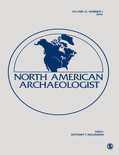
NORTH AMERICAN ARCHAEOLOGIST
Elevating Archaeological Discourse in North AmericaNORTH AMERICAN ARCHAEOLOGIST, published by SAGE PUBLICATIONS INC, is a prestigious journal that serves as an essential resource for professionals and scholars in the field of archaeology. With its ISSN 0197-6931 and E-ISSN 1541-3543, the journal aims to disseminate high-quality research that contributes to the understanding of the historical and cultural significance of North America from prehistory to the present. As of 2023, it holds an impressive Q2 category in Archaeology and ranks within the Q1 tier for Archaeology (arts and humanities), positioning it among the top journals in its field. Its Scopus rankings further emphasize its significance, reflecting a commendable percentile standing that underscores its influence in both arts and humanities and social sciences. The journal is committed to offering a platform for innovative research and scholarly discussion, making it invaluable for researchers, professionals, and students dedicated to advancing archaeological knowledge.
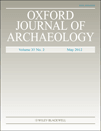
Oxford Journal of Archaeology
Connecting Scholars, Inspiring DiscoveriesOxford Journal of Archaeology is a prestigious peer-reviewed journal published by WILEY, dedicated to advancing the field of archaeology through innovative research and insightful discourse. Established in 1982, this journal has become a vital resource, showcasing high-impact studies that resonate within the arts and humanities, as well as interdisciplinary fields such as geography and planning. With an impressive Q1 ranking in both Archaeology and Arts & Humanities categories, and a Q2 ranking in Geography, Planning, and Development, the journal consistently maintains its reputation for excellence—evidenced by its ranking in the 81st percentile within the Scopus Arts and Humanities Archaeology category. The Oxford Journal of Archaeology not only provides scholars, professionals, and students with access to cutting-edge archaeological research but also encourages collaboration and dialogue among a diverse academic community. Although the journal does not currently offer Open Access, it remains a crucial platform for those seeking to expand their knowledge and impact in this dynamic field.
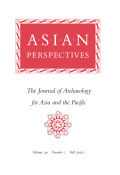
Asian Perspectives-The Journal of Archaeology for Asia and the Pacific
Advancing Knowledge: Illuminating Archaeological HeritageAsian Perspectives - The Journal of Archaeology for Asia and the Pacific is a prestigious journal published by University of Hawaii Press, focusing on the intricate field of archaeology in Asia and the Pacific. With a rich publication history dating back to 1993, the journal has established itself as a vital platform for disseminating research that illuminates the archaeological heritage and cultural dynamics of this diverse region. Recognized for its scholarly impact, it enjoys a commendable impact factor and ranks in the Q2 category for Anthropology and Archaeology, indicating its significant contribution to these fields. Although it operates on a traditional subscription-based model, the journal is accessible to institutional and individual subscribers worldwide. With an emphasis on interdisciplinary research, Asian Perspectives invites contributions that foster a deeper understanding of historical and contemporary issues through archaeology, making it an invaluable resource for researchers, professionals, and students alike committed to advancing scholarly dialogue in the region. Explore a wealth of innovative studies and insights that continue to shape the understanding of Asia and the Pacific's archaeological narrative.
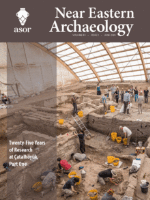
NEAR EASTERN ARCHAEOLOGY
Illuminating the Secrets of Ancient CivilizationsNEAR EASTERN ARCHAEOLOGY, published by University of Chicago Press, is a premier journal dedicated to the field of archaeology, particularly focusing on the rich cultural heritage and archaeological findings of the Near East. With an ISSN of 1094-2076 and an E-ISSN of 2325-5404, this esteemed publication provides a vital platform for scholars and practitioners to share their research, insights, and discoveries. The journal holds an impressive ranking in the Q1 quartile for both Archaeology and History in 2023, reflecting its significant impact within these fields and a robust history of scholarly contribution. The journal has been pivotal in shaping discussions around archaeological methodology, theory, and contemporary issues from 2002 to 2024, as it continues to reach a wide audience through various access options. With Scopus rankings placing it in the top percentiles for both History and Archaeology, NEAR EASTERN ARCHAEOLOGY represents an essential resource for researchers, professionals, and students alike, fostering the exploration and understanding of the region's archaeological narrative.

Archeologicke Rozhledy
Empowering researchers to uncover the stories of our past.Archeologicke Rozhledy, published by the Academy of Sciences of the Czech Republic, Institute of Archaeology, is a pivotal open-access journal dedicated to advancing the field of archaeology. Since transitioning to open access in 2019, it has made significant strides in disseminating high-quality research, serving as a vital resource for researchers, professionals, and students alike. With an ISSN of 0323-1267, the journal has gained recognition for its contributions in the domains of arts and humanities, particularly archaeology, as evidenced by its 2023 Q2 ranking in both categories. Operating out of the historical city of Prague, the journal encompasses a broad scope of archaeological scholarship, reflecting a commitment to interdisciplinary approaches and fostering dialogue within the global archaeological community. With its notable Scopus rankings—#115/413 in Arts and Humanities and #113/354 in Social Sciences—Archeologicke Rozhledy stands as a crucial outlet for innovative research and scholarly exchange.